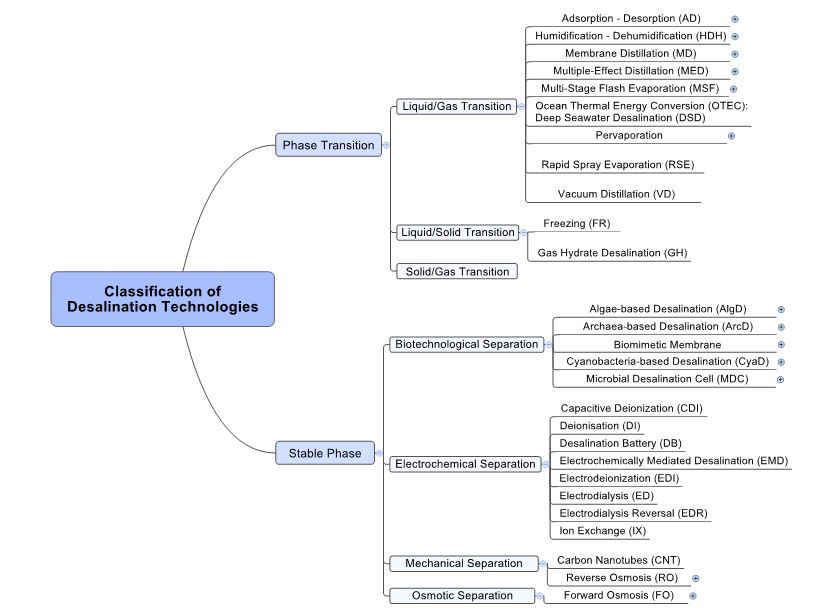Desalination technology is used by humans since thousands of years. Being in the desert surrounded by sand and rocks or being on the sea sailing through salty waters, always fresh water is needed every day to keep the human body in a balanced hydrate mode.
Nature started using desalination processes from the very first moment. Different concentration levels drive everything alive on our planet. Humans started using first evaporation and condensation processes to purify unusable water. In the last century the number of processes to desalinate water and other liquids has gone through a very big development. New processes have been found, existing processes have been improved.
Overviewing all known desalination processes of today we may find a large number in a lot of science areas. In order to give this convolute of technology a systematic structure a larger group of desalination experts and scientists developed a Classification of Desalinaiton Technology (CDT) system.
This Classification of Desalinaiton Technoogy system is based on the natural working principles of chemistry, physics and biology. It starts as low as electrochemistry and nuclear physics. From here on it is building up its structure. Under the five main science fields 20 subordinated science areas have been found describing all natural working principles in desalination systems.
In order to structure all known desalination technologies a general structure was build up to the Classification of Desalinaiton Technology system (CDT):
- The first classification level does divide in transient phase and stable phase technologies.
- The second level classes represent the separation processes of desalination technologies.
- The third level classes show the main technology, in some cases without further structure.
- The fourth level classes are split in advanced sub-desalination technologies.
In total there were 51 desalination technologies found and classified inside CDT.
As of today the used technologies mainly are Multi-Stage Flash and Reverse Osmosis they can be found within the structure at the third level.
Everybody is free to make use of this CDT but is asked to make a reference to DME GmbH on behalf of all people being involved, please.
We will keep developing CDT and you are free to participate in this discussion!
